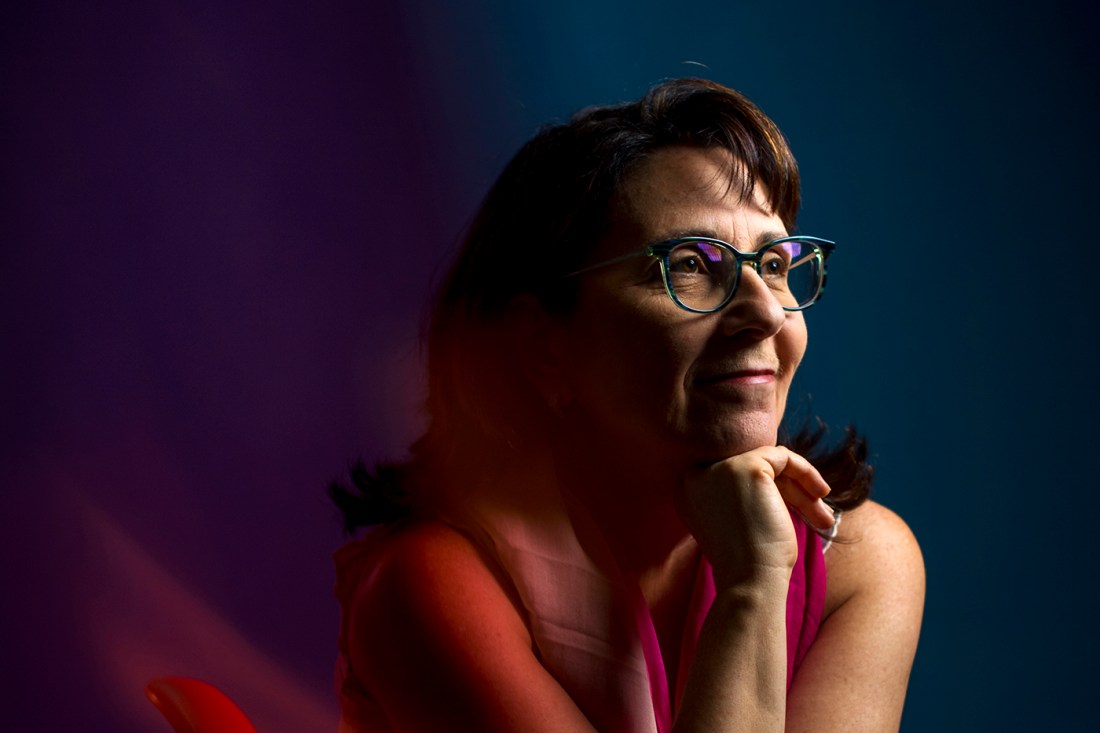Lisa Feldman Barrett, university distinguished professor of psychology and co-lead of the Interdisciplinary Affective Science Laboratory, says that she began her career “trying to answer what I thought was a modest question about the nature of emotion.”
This turned into a more sizable question than she’d expected, and led to her pursuit for “a general theoretical framework for understanding how a brain — in conversation with the body and the world — creates your mind.”

Barrett calls her approach relational realism, and, at some point along this journey, she realized that this “framework actually has relevance as a philosophy of mind and as a philosophy of science.”
Now, as a psychologist, neuroscientist and philosopher, Barrett has received multiple invitations to present at named lectures around the world, including the annual Rudolf Carnap Lectures at Ruhr University Bochum, Germany.
Named for the philosopher Rudolf Carnap, the lectures “provide a platform for distinguished scholars to present their work in the form of several talks on their preferred topic,” focusing on the philosophy of mind, language or science, according to the lecture series’ website.
Named lectures, Barrett says, don’t come along very often in her primary fields of psychology and neuroscience. “But in philosophy, it’s a very big deal. And I’m giving two.” In addition to the Carnap lectures, which occurred in March, Barrett will give the annual Pufendorf Lectures at Lund University in May.
“To be asked to speak about the philosophical writings that I’m working on, and how they came from my scientific work, is a real privilege.”
Barrett says that the way many scientists have approached the question of mind has been suboptimal, working backward from experience rather than toward it.
“Instead of starting with brain evolution, brain structure, brain function, brain development,” she says, “scientists [and] philosophers, they start with their own experiences, and they go looking for the physical basis of those experiences in the brain.”
She uses the feeling of anger as an example. “Probably all neurotypical scientists experience anger if they have lived in a Western culture or are familiar with one,” she says. Given this shared personal experience, “they then go looking for the biological basis of anger in the brain somewhere.”
But using this kind of personal experience “as a guideline for what’s universal is a bad way to do science,” she says. “It assumes that objectivity is that which is shared by neurotypical scientists from the West.”
“It’s not like there’s a place in your brain that’s dedicated to anger and another place that’s dedicated to rationality and another place that’s dedicated to the self,” she continues. Rather, “your brain is having constant conversation with your body and with other brains-in-bodies in the world around you.”
Under what she calls traditional or conventional realism, “Most of us walk around in the world believing that the world is out there, that there’s a reality that’s separate from us, that we might never know that reality objectively, but we believe it’s there.”
But traditional realism misses a big part of the picture, she says.
“When you experience a solid object, you are not experiencing something in an objective reality that is separate from you,” Barrett says. But neither are experiences “only in your head. Your experiences emerge as the relations between the signals in your brain, the signals in your body and the signals in the world.”
Take an apple. While traditional realists might say “the apple is red,” her research suggests that “red” emerges through a relationship, “the relation between the [light] signals coming off the apple — which hit your retina and make their way to your brain — and the signals in your brain, assuming you have a neurotypical retina with three cones, and a neurotypical brain,” she notes.
“Red is a property of the relationship between the signals in the world and the signals in your brain.”
Barrett calls this model relational realism, “the idea that everything that is real — everything that exists in reality — exists only in relation to something else. And much of the time, that ‘something else’ is you,” she wrote in a follow up note.
Barrett gave a series of four talks for the Rudolf Carnap Lectures, discussing her research on the nature of emotion, what that research taught her about the structure and function of the human brain and her developing philosophy of relational realism. An awards ceremony preceded the second lecture, where she received the first Ruhr Award for Philosophy and the Mind Sciences.
For someone with a career that began in clinical psychology, then moved into neuroscience, evolutionary biology, engineering and now philosophy, Barrett’s work is deeply interdisciplinary.
She’s quick to note that she has been fortunate to work with brilliant students and generous colleagues. Barrett points to “a wonderful saying by the well-known social psychologist Hazel Markus. She said, ‘You can’t be a self by yourself.’”
“You have to have great colleagues who are in other disciplines who want to work with you, and who want to teach you and who are patient and generous.”
The Rudolf Carnap Lectures were Barrett’s first philosophy-specific lectures, she says, and she noted the generosity displayed by the attendees there. “They had a hundred suggestions for things I should read,” she says. “There’s a certain generosity of spirit that is required for interdisciplinary work.”
Noah Lloyd is the assistant editor for research at Northeastern Global News and NGN Research. Email him at n.lloyd@northeastern.edu. Follow him on X/Twitter at @noahghola.
